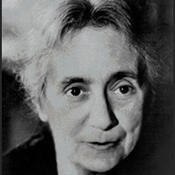 Eastern European Jewish immigrants brought to America a strong sense of Yiddishkeit, or social, political, and cultural “Jewishness,” which manifested most prominently in the political movement of Zionism throughout the late 19th and 20th centuries.
Eastern European Jewish immigrants brought to America a strong sense of Yiddishkeit, or social, political, and cultural “Jewishness,” which manifested most prominently in the political movement of Zionism throughout the late 19th and 20th centuries.
Along with their traditional notion of Judaism, the immigrants from Eastern Europe brought with them a solid sense of their own ethnicity. In the old country, whether it was Russia, Poland, or Lithuania, Jews identified themselves as Jews rather than Russians, Poles, or Lithuanians. Despite having lived in a country for centuries, they had their own national culture, language, and society. This cultural phenomenon—Yiddishkeit, the Yiddish word for “Jewishness”—would not so easily dissipate in the New World. While Jewish religious practice was rapidly democratizing, secularizing, Americanizing, and undergoing schisms into different movements, Jewish ethnic, political, and cultural identity persisted through the immigrant era and into the succeeding generations.
On a grassroots level, this ethnicization may be traced all the way back to early American Jews such as Mordecai Manuel Noah, a journalist, public speaker, and proto-Zionist. The first institutional expression of ethnicization came at the height of the mid-19th century German Jewish immigration. In 1843, the first ethnic Jewish organization was founded in New York City. B’nai B’rith, or “Sons of the Covenant,” began as a fraternal club offering its membership a Jewish alternative to the synagogue. But in the main, German Jews continued to support their Reform temples, and, as they further Americanized, to identify themselves as Jews only in a religious sense. If not for the mass immigration between 1881 and 1914, they may well have forgotten their roots as a people altogether. But the arrival of the immigrants was a clear reminder that they had ethnic ties beyond their fellow German-Americans.
Eastern European immigrants had no such ambivalence. Their self-understanding as a people was expressed in innumerable Jewish ethnic organizations and secular institutions. The best known of these was the Landsmanshaft, a mutual benefit society formed by “landsmen,” or neighbors from the same area in the old country. Hundreds of such informal groups sprouted up during the immigrant period in North America, laying the foundation for more formal Jewish organizations such as free loan societies, trade unions, Yiddish organizations, cousin clubs, insurance and burial collectives, and synagogues.
The heavy involvement of immigrant Jews in the American labor movement was an outgrowth of Jewish identity. Common background and language enabled Jewish workers of diverse trades and economic sectors to find common political cause. A key factor in both the maintenance of a Yiddishkeit culture and the leftist politics of the immigrant community was the Yiddish press, best represented by Abraham Cahan’s Yiddish-language progressive newspaper, The Daily Forward.
The most lasting expression of ethnic Jewishness in America was the political and cultural movement of Zionism. Emerging as a movement in 1897, Zionism competed with socialism as one of the leading ideologies of the Jewish-American immigrant community in the early 1900s. During those years, Zionism made its greatest inroads as the basis for the new Jewish education, bringing Hebrew language and Jewish history education to Jewish youth. When America came to favor nationalism over socialism in the First World War, Zionism became the preferred orientation of most American Jews, both religious and secular.
In 1909, the Reform Rabbi Judah L. Magnes attempted to unite the entire New York City Jewish community under the banner of Jewish peoplehood, calling his umbrella structure the kehillah, Hebrew for “community.” At the same time, when it came to supporting the establishment of a Jewish state, Rabbi Magnes was an early and avid voice for a two-state agreement and for conciliation with the local Arab population. In 1917, a national representative congress of American Jews was developed, naming itself the American Jewish Congress, again with Jewish nationalism as its unifying ethos. Perhaps the most telling example of how Zionism shaped American Jewish ethnicity was the ascendancy of soon-to-be Supreme Court Justice Louis D. Brandeis to the head of the American Zionist Movement in 1914. Brandeis’ credo was, “To be good Americans, we must be better Jews, and to be better Jews, we must become Zionists.” For many, Americanism and Judaism were seen to be compatible in terms of the liberal political ideals and broad support for the development of the state of Israel from both American Jews and successive American administrations.
Through their ongoing support of Israel, many American Jews demonstrate their continued adherence to the notion of Jewish ethnicity. However, since American Zionism as a political movement found a good deal of fulfillment with the establishment of Israel in 1948, the emotional impulse of Zionism has often been co-opted by other Jewish ethnic sectors, such as secular philanthropy and the religious denominational movements. The most important Jewish thinker to advocate the combination of Jewish nationalism and Jewish religion was Mordecai M. Kaplan, the founding father of Reconstructionist Judaism in the 1930s. Subsequently, the historical event of the Holocaust, the birth of the state, and the Six Day War of 1967 have all combined to sear Israel into Jewish consciousness, both religious and secular, as a central symbol of Jewish identity.